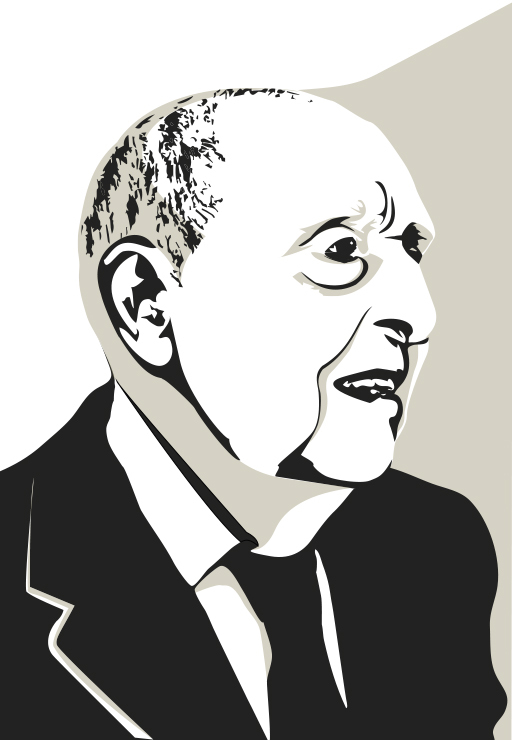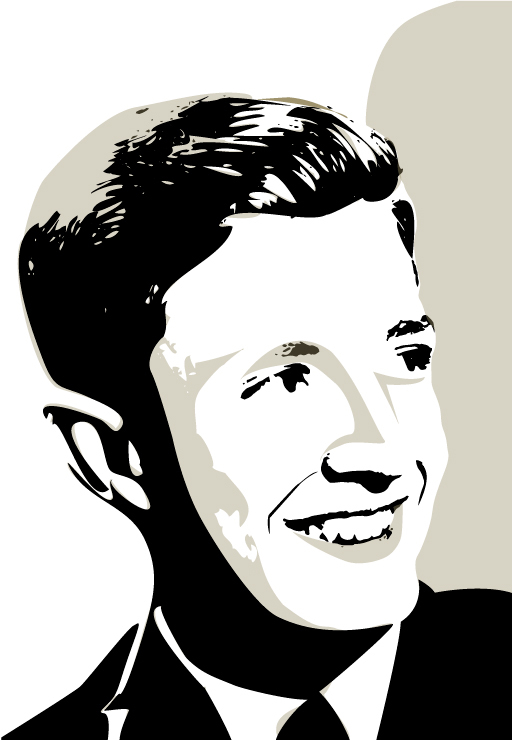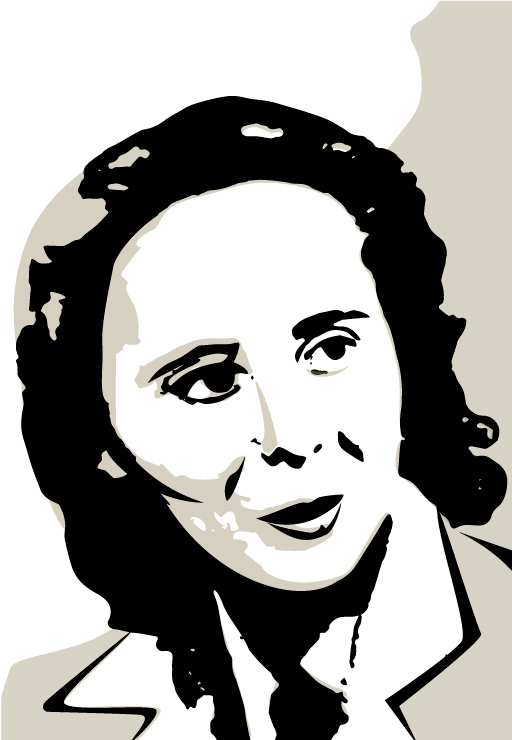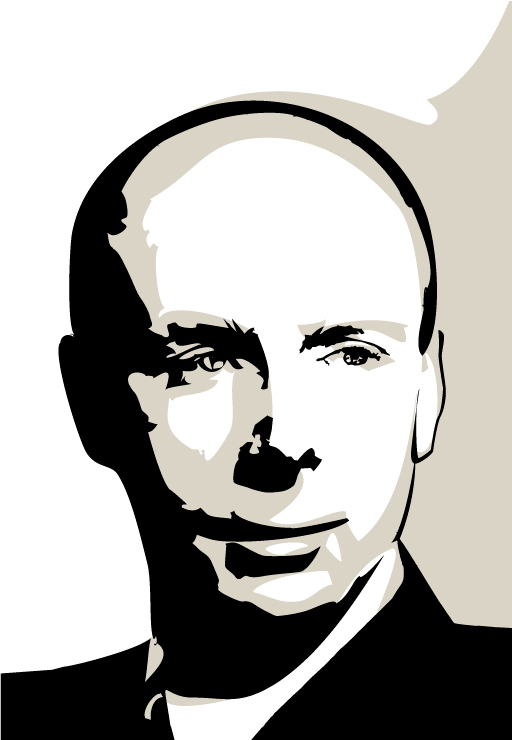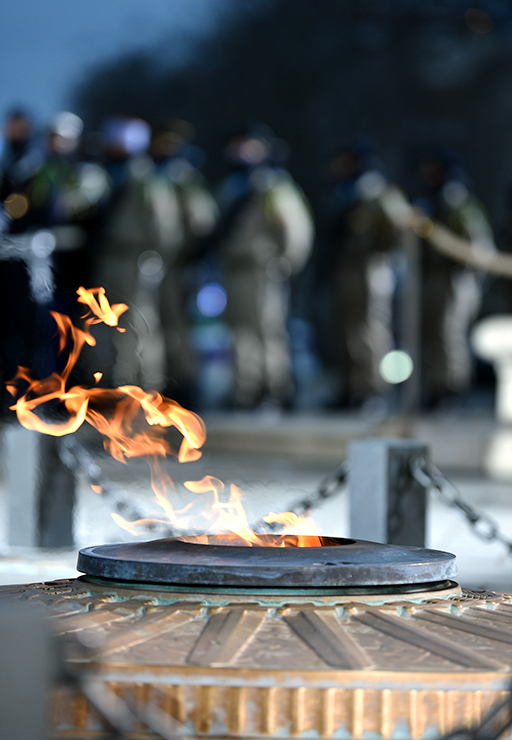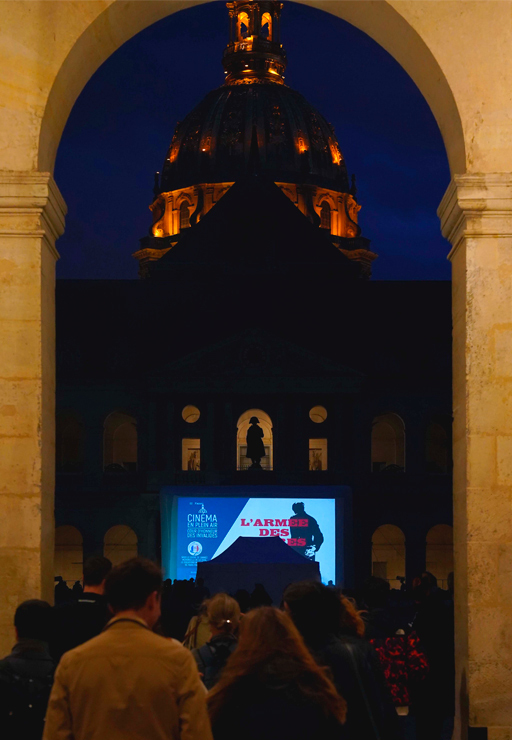Our history started during the fight for the liberation of France, at the heart of the Second World War.
On June 18, 1940, General de Gaulle called upon the French people to refused to accept the capitulation. In London, volunteers joined him to continue the fight. Some of them opted for clandestinity, thus risking their lives. A handful of them were made ‘Compagnons de la Libération’.
We cultivate the legacy of these outstanding women and men and are proud of our values: loyalty, demandingness, discretion and adaptability.
Deep inside us, we carry the experience of clandestine activities.

On July 1, 1940, General de Gaulle tasked André Dewavrin with creating the intelligence service of Free France. Its objective: collect reliable intelligence on France’s situation.
A young Polytechnique graduate aged 29, André Dewavrin, had no experience in the field of intelligence but was a brilliant organizer. Under the alias ‘Passy’, he set up an original structure in charge of collecting and analysing intelligence but also of conducting clandestine actions against the occupying forces. This integrated model, unique in the world, is still today that of the DGSE.
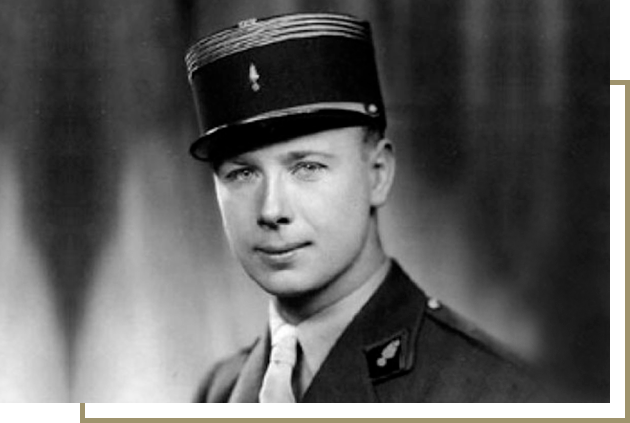
In 1942, Free France’s intelligence service adopted the name Central Bureau for Intelligence and Action (BCRA). Today, the DGSE is heir to the BCRA.
The BCRA agents carried out many missions in the occupied territory: sabotage, escapes, airdrops, creation and development of Resistance networks. They communicated with London through encrypted radio links, and always clandestinely.
These operations allowed to achieve the unification of all the French Resistance movements under the authority of General de Gaulle. The intelligence collected by the BCRA also contributed to ensure the success of the military operations conducted by the Allies. Thus, the BCRA played a key role that allowed France to sit at the table of victors.
In early 1943, General de Gaulle tried to assert his authority in the domestic Resistance movement.
Jean Moulin, the General’s representative in Lyon, had already succeeded in uniting the Resistance movements in the southern zone, while in the northern zone, everything remained to be done.
General de Gaulle decided to send Colonel Passy (aka Arquebuse), the head of the BCRA, and Pierre Brossolette (aka Brumaire), his number two, to Paris. In a few weeks’ time, in clandestinity, they managed to unite the five main Resistance movements in the northern zone, including the communists, and to ensure their coordination under the command of a single leader, General de Gaulle.
Mission Arquebuse-Brumaire made the unification of the different movements within the National Resistance Council (NRC) possible. The latter met, for the first time, on May 27, 1943. From then on, the Allies could no longer have any doubt about General de Gaulle’s legitimacy.
In November 1943, the staff of General Eisenhower conceived a plan to allow the Allies to have relays on the ground when the landings take place.
This plan rested on the ability of the BCRA intelligence officers, trained by the Americans and the British, to infiltrate the occupied territory.
From February 1944, 108 French agents were dropped in tandem (one observer and one radio operator) between the far end of Brittany and the French-Belgian border: only four of them were over 30 and two of them were women.
These tandems were tasked with blending in among the population and to provide the Allies with intelligence collected on the enemy’s activities (German presence, locations of weapon stockpiles and fuel depots).
The intelligence collected thanks to the Sussex Plan turned out to be determining on D-Day.
The Order of the Liberation was created on November 16, 1940. General de Gaulle meant to reward all the women and men, who had taken so many risks to liberate France. Those who received this distinction are called the ‘Compagnons de la Libération’: there were only 1,038 of them.
174 ‘Compagnons de la Libération’ served in the French intelligence services, first and foremost in the BCRA. Among them, 60 died for France during the Second World War.
If we are still an intelligence and action service today, this is thanks to this affiliation. We are heirs to these agents with an extraordinary destiny.
Discover the profile of five of them.
By your side, among you, although you do not always know it, the men of the underground fight, struggle and die for the liberation […]. Pay a tribute to them, French people! They are the unseen workers for glory!
the number two of the BCRA

To materialize this filiation between the BCRA and the DGSE, our military personnel was given, on September 17, 2018, by the minister of the Armed Forces, Florence Parly, the fourragère of the Order of the Liberation.
Hubert Germain, the last Companion of the Liberation, member of the BCRA, attended this ceremony in the main courtyard of the Hôtel des Invalides. This was an intense moment for all DGSE members.
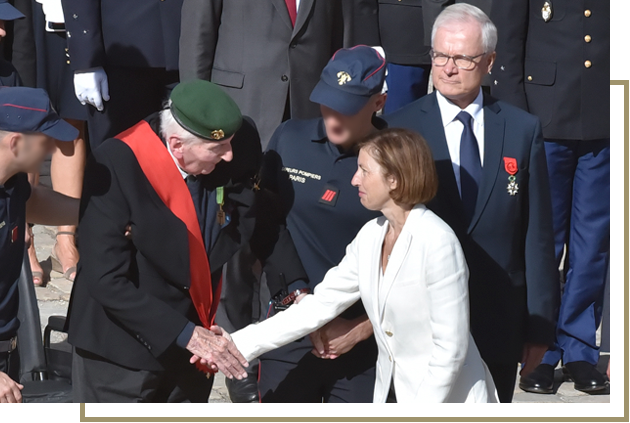
The fourragère of the Order of the Liberation is made of a lanyard with interwoven green and black threads. These colours represent the mourning of the oppressed country and the hope of the Motherland.
Besides, when joining the DGSE, each staff member, whether civilian or military, receives an insignia of affiliation with the Cross of Lorraine, on which the first part of the motto of the Order of the Liberation is written: Patriam Servando (By serving the Motherland).
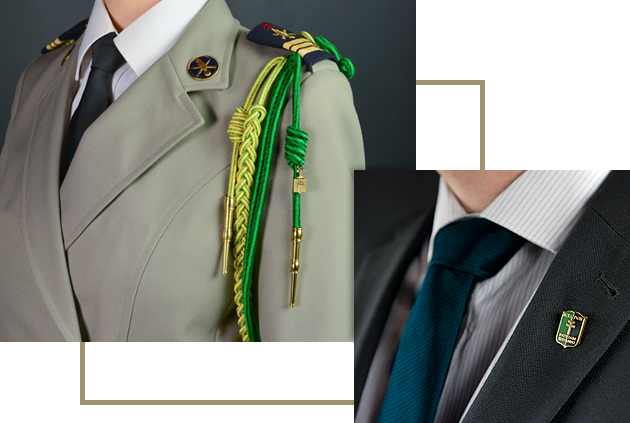
It is a commitment implying a sense of renunciation and sometimes sacrifices.
On November 8, 2019, in order to honour the memory of the women and men, who have lost their lives on duty, the President of the Republic, Emmanuel Macron, inaugurated our monument to the dead.
This monument pays tribute to the heroes, who, since the creation of the secret services of Free France until now, have died for France in the utmost secrecy. Each of them is represented by a cornflower, the symbol of the combatants, who fell for our country. This French flower grew in the mud of the trenches of the First World War. A flower of sacrifice, it is a flower of hope too.

The year 2022 was marked by a dual anniversary, i.e. 80th for the Central Bureau of Intelligence and Operations (abbreviated BCRA) and 40th for the DGSE.
It reflected the French secret services’ historic legacy and their significant role – always expected, often determining and sometimes decisive– under our government.
In an era of terrorism, economic interference, cyber threats and renewed war in Europe, we remain the heirs to BCRA and its unique pattern of a special and embedded clandestine intelligence and operations service. This major asset allows us for endless innovation in the fulfilment of our mission that is to protect the French interests worldwide.
From BCRA to DGSE, several generations of men and women have been doing and are still doing a fantastic job, full of strong engagements, renunciation and sacrifice.
This year of memory included the organisation of several events.





